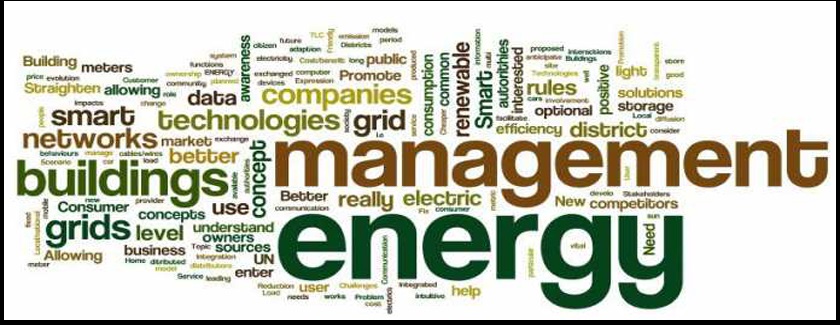Energy Management
Contact us

Energy Management
Facility management is a challenging role in any organization.
Energy management can be broadly defined as the proactive, organized, and systematic management of energy use in a building or organization to satisfy both environmental and economic requirements.
Companies across all sectors are turning to energy management as a means to reduce their operating costs. Specific requirements and practices differ by sector, but the core principles apply to all companies. It involves the following steps:
1. Collecting the energy data and metering your energy consumption
2. Identifying opportunities to save energy
3. Taking action to save energy
4. Tracking the progress and ongoing improvement
Whether you associate energy management with energy-saving efforts that focus on making better use of existing buildings or equipment, or with energy awareness, it doesn’t matter.
Energy management is a process that does not limit to large buildings and offices. You can apply the same principles for your home and therefore continue the positive loop explained in the four steps above (collect, identify, act, track).
Rising energy prices and sustainability requirements are pushing facility managers to improve their organization’s energy efficiency. Companies are beginning to understand that real-time energy data can deliver energy savings. Data can point out when equipment and/or staff behavior are wasting energy. It can show where and when there is operational inefficiency. “You can’t manage what you don’t measure.” This is a commonly used quote in the energy management industry, but it’s not as simple as it seems. Hundreds of companies collect operational data that ends up sitting on a server somewhere without being put to good use.
How Energy Management Works
As explained above, there are four steps to the energy management process, and we will cover them one by one.
Step 1: Data Collection
There is no secret here. The more data you can get, and the more detailed it is, the better.
Energy data can come from your monthly utility bills, from manual meter checks (old school approach once a week, or once a month), or from automatic uploads from smart meters. Monthly bills might be an easy starting point, but you’ll see the limits of that approach very quickly.
The lack of detail in terms of time, area, and type of energy use make it difficult to find useful insights. Manual meter checks can give you a day-by-day curve, but this process is time-consuming and error-prone.
Smart meters that record, store, and transmit data, where it can be viewed and processed using a dedicated software platform, are ideal. However, you choose to get your data, it is a necessary first step.
Step 2: Identify Opportunities
When you begin to investigate and analyze your data, you’ll begin to find interesting bits of information. It may be an increase in your monthly bill after adding new air conditioning units, or an increase in lighting use during overtime hours.
Whatever the situation, you need proper visualizations (graphs) and analytics to find out what is happening behind the raw data. This can be difficult to achieve by spreadsheet, but simple year-on-year comparisons can be a good starting point.
Step 3: Action
Achieving savings requires action. When you identify opportunities for saving, the natural next step is to act on them. Some solutions may be one-off fixes, while others may need more internal cooperation and persuasion. Building support for action can be more challenging than the action itself. It helps to provide clear evidence of the savings opportunity. When everyone agrees and understands that there is a problem, you can build momentum to take action and solve it.
You can create graphs and presentations yourself or share the findings through cloud software.
Step 4: Track Progress & Ongoing Improvement
Now that you are taking the right actions to save energy, it’s time to track the process and implement an ongoing improvement schedule. New problems will arise over time, and old ones may reoccur. To ensure your energy optimization initiatives succeed in the long run, you need to monitor your progress, verify savings, and respond quickly to abnormalities.
Make sure your energy management system can provide you with regular performance reports and timely alerts. This lets you address problems immediately. But even without an advanced tool, you should still input your monthly bills into a spreadsheet and make sure everything stays on track.
Conclusion
Energy management is essential for dealing with rising costs and regulatory requirements. The earlier you start the better. To do it right and smart, you should have an energy management system to automate and optimize each of the four steps above.
At the minimum, you should keep an eye regularly on your energy data, just to ensure things are not getting worse. But ideally, you are considering energy management as an ongoing effort to find new savings opportunities, engage your employees, and track your progress.
Only then will you achieve lasting results without investing frustrating hours into manual work.
Services: Marble Polishing Services | Housekeeping Services | Post Construction Cleaning Services | Facade Cleaning | Facility Management Services


